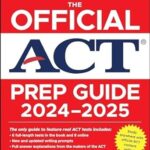For entomologists, nature enthusiasts, and anyone curious about the six-legged creatures that share our world, A Field Guide to Insects: America North of Mexico PDF represents an invaluable resource. This guide opens a gateway to understanding the incredible diversity of insect life across North America.
Essential Insect Guides and Resources
Identifying insects can be a challenging yet rewarding endeavor. Several publications and online resources offer assistance in this area, helping beginners and experts alike distinguish between different species.
- Borror, D. J., and R. E. White. 1970. A Field Guide to Insects: America North of Mexico. Boston: Houghton Mifflin. This classic guide remains a staple for insect identification, providing detailed descriptions and illustrations. Finding a A Field Guide to Insects America North of Mexico PDF version can offer convenience and portability.
Alt text: Cover of the classic “A Field Guide to Insects: America North of Mexico” featuring a collage of diverse insect illustrations.
Supplementary Resources for Insect Study
Beyond field guides, numerous online resources can enhance your knowledge of insects and their roles in the ecosystem.
- Xerces Society. 2017. “Beneficial Insects for Natural Pest Control: Soil Scouting.” This guide, available on the Xerces Society website, focuses on identifying beneficial insects that contribute to natural pest control in agricultural and garden settings. Scouting these insects can help in integrated pest management strategies.
Alt text: Image from Xerces Society’s Soil Scouting guide, showcasing common beneficial insects like ladybugs and lacewings.
The Importance of Soil Health and Its Inhabitants
Insects play a crucial role in soil health. Understanding their contributions can help promote sustainable practices in agriculture and gardening.
-
Nardi, J. B. 2009. Life in the Soil: A Guide for Naturalists and Gardeners. Chicago: University of Chicago Press Provides valuable insights into the soil ecosystem and the importance of insects and other organisms.
-
Moebius-Clune, B. N., D. J. Moebius-Clune, B. K. Gugino, O. J. Idowu, R.R. Schindelbeck, A. J. Ristow, H. M. van Es, et al. 2016. Comprehensive Assessment of Soil Health: The Cornell Framework. Geneva, NY: Cornell University. A framework for assessing soil health, which indirectly relates to the presence and activity of beneficial insects.
Cover Crops and Their Impact on Insect Populations
Cover crops can influence insect populations, both positively and negatively. Selecting the right cover crops can support beneficial insects while minimizing harm to others.
-
Midwest Cover Crops Council. www.midwestcovercrops.org/ Offers resources on cover crop selection and management, including considerations for insect interactions.
-
Northeast Cover Crops Council http://northeastcovercrops.com/ Similar to the Midwest council, provides region-specific information on cover crops and their ecological impacts.
-
Sustainable Agriculture Research and Education (SARE). “Cover crops.” www.sare.org/resources/cover-crops/ SARE offers a wealth of information on cover crops, including their effects on soil health and insect communities.
Alt text: A diverse mix of cover crops growing in a field, showcasing their potential to enhance soil health and support beneficial insects.
Pesticide Use and Bee Precautions
When using pesticides, it’s crucial to consider their impact on beneficial insects, especially bees.
-
University of California IPM. “Bee precaution pesticide ratings.” www2.ipm.ucanr.edu/beeprecaution/ This resource provides information on the relative toxicity of different pesticides to bees, helping users make informed choices.
-
USDA NRCS. “Windows Pesticide Screening Tool (WIN-PST).”https://www.nrcs.usda.gov/resources/tech-tools/windows-pesticide-screening-tool-win-pst A tool to assess the potential environmental risks associated with pesticide use.
Promoting Soil Health for a Thriving Ecosystem
Ultimately, promoting soil health benefits not only agriculture but also the entire ecosystem, including insect populations.
-
USDA Natural Resources Conservation Service (NRCS). “Soil health.” www.nrcs.usda.gov/wps/portal/nrcs/main/soils/health/ The NRCS website provides comprehensive information on soil health principles and practices.
-
USDA NRCS. “Soil Health Assessment.” https://www.nrcs.usda.gov/conservation-basics/natural-resource-concerns/soils/soil-health/soil-health-assessment Learn how to assess soil health on your own property.
Conclusion
Exploring the world of insects requires a combination of field guides, online resources, and a deep understanding of ecological principles. By utilizing resources such as A Field Guide to Insects America North of Mexico PDF and adopting sustainable practices, we can better appreciate and protect these vital creatures. For further learning, consult the resources mentioned above and continue exploring the fascinating world of entomology.
